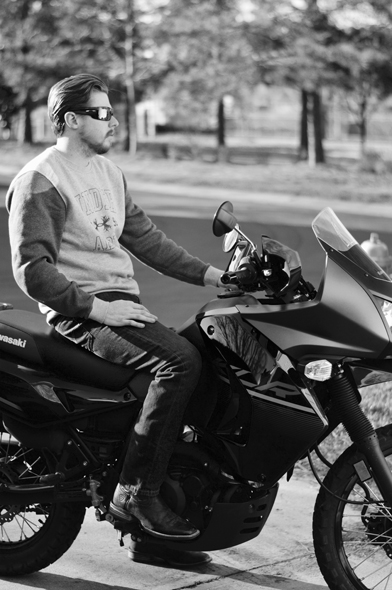
Lucas Mentch, SAMSI Postdoctoral Fellow.
Lucas Mentch was born in Indiana Pennsylvania, a town in Western Pennsylvania just east of Pittsburgh, and grew up in central Pennsylvania near Harrisburg. While he was attending high school, he took a statistics course and decided to pursue the subject at Bucknell University in Lewisburg, PA where he majored in mathematics. He asked his professors about how to pursue a career in statistics and many of them told him it was good to have a background in math first.
Lucas attended Cornell University for his graduate studies, where he obtained a Masters and PhD in statistics. He got interested in machine learning and has been looking at developing new statistical inference techniques in this context. He looks at big, messy datasets that are difficult to apply traditional statistical models to, and applies a learning algorithm to pick out large-scale patterns. Those algorithms are good for making predictions, but are difficult to use to assess the uncertainty of a prediction or where it comes from. Lucas’ research is trying to bridge the gap between machine learning and traditional statistical analysis.
While Lucas was at Cornell, he started thinking that criminology or forensics was a good area in which to try his new methods. “You’ve got either data from specific crimes or a crime database where you are trying to pick out raw patterns. You might be looking for other specific things, such as a specific time when crimes are committed, or certain areas in a city where crime occurs more often. I wanted to use machine learning to find those larger patterns, but also trying to see which variables are actually making a difference,” Lucas explained.
Lucas was alerted to the program at SAMSI by Len Stefanski, a professor at NC State and also by Benjamin Risk, another postdoc who is at SAMSI this year after finishing his degree at Cornell. Ben is involved with the Challenges in Computational Neuroscience program.
Lucas is involved with two working groups. He is participating in the Bias group. He remarked “There is not been a lot of attention in the area of bias in the past. It has to do with how much of a forensic examiner’s case-specific knowledge is influencing what they conclude. So, for example, if they know a lot of details about a murder, is that influencing what they say? ” The group is working with the Houston Crime Lab to set up blinding procedures where a case manager acts as an intermediary to police and the analysts. The case manager screens the information before it gets to the analysts to ensure the tests are carried out in an unbiased fashion.
The other working group that Lucas is in is trying to assess the quality of latent pattern evidence. Fingerprints are taken from a crime scene using whatever means are available and then scan it into a system to be imported as an image. But the quality of each scanner can be different, just as any piece of computer equipment or camera taking a photo can be different. Different kinds of scanners distort the fingerprints in different kinds of ways and some scanners can produce a crisp image, even when the fingerprint itself is very smudged.
“There’s been a lot of work on quality metrics for fingerprints. So you have a fingerprint and someone puts a number on how good the fingerprint is compared to others. One of the things our group is trying to do is to say ‘does it matter what type of scanner you use with the original fingerprint?’ Our group recently got some data and can already see that fingerprints scanned with one type of scanner are almost universally better than those taken with another type of scanner according to most existing quality metrics,” Lucas said. He explained that a good scan of a bad fingerprint can often get a higher score than a good fingerprint scanned with a bad scanner. The group is well into completing this project.
“One great thing about the SAMSI program is that I have been able to meet and interact with people in forensics. Most universities don’t have a Department of Forensics, so it would have been difficult to develop these relationships in a purely academic setting,” noted Lucas.

One of Lucas’ hobbies is to ride motorcycles.
When Lucas has time to himself, he loves to ride motorcycles watch movies of all genres.
Next year Lucas will be back at the University of Pittsburgh. He took a year of leave to be able to participate in the SAMSI program. He will continue to collaborate with people from his working groups on the projects they have started.



